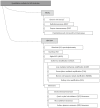Rapid and quantitative detection of hepatitis B virus
- PMID: 26576084
- PMCID: PMC4641117
- DOI: 10.3748/wjg.v21.i42.11954
Rapid and quantitative detection of hepatitis B virus
Abstract
Despite availability of a universal vaccine, hepatitis B virus (HBV) infection has a huge impact on public health worldwide. Accurate and timely diagnosis of HBV infection is needed. Rapid developments have been made in the diagnostic and monitoring methods for HBV infection, including serological and molecular assays. In clinical practice, qualitative hepatitis B surface antigen (HBsAg) testing has long served as a diagnostic marker for individuals infected with HBV. More recently, HBsAg level has been used to predict treatment outcome when determined early during treatment or at baseline. However, identification of HBV DNA positive cases that do not have detectable HBsAg has encouraged the application of molecular tests. Hence, combination of quantitative detection of HBV DNA and HBsAg can be used to discriminate patients during the course of HBV infection and to monitor therapy. This article reviews the most commonly used quantitative methods for HBsAg and HBV DNA.
Keywords: Biosensor; Hepatitis B virus; Isothermal amplification methods; Polymerase chain reaction; Quantitative assay.
Figures




References
-
- Arzumanyan A, Reis HM, Feitelson MA. Pathogenic mechanisms in HBV- and HCV-associated hepatocellular carcinoma. Nat Rev Cancer. 2013;13:123–135. - PubMed
-
- Gish RG, Locarnini SA. Chronic hepatitis B: current testing strategies. Clin Gastroenterol Hepatol. 2006;4:666–676. - PubMed
-
- Fung J, Lai CL, Yuen MF. Hepatitis B virus DNA and hepatitis B surface antigen levels in chronic hepatitis B. Expert Rev Anti Infect Ther. 2010;8:717–726. - PubMed
-
- Blumberg BS, Sutnick AI, London WT, Millman I. Australia antigen and hepatitis. N Engl J Med. 1970;283:349–354. - PubMed
Publication types
MeSH terms
Substances
LinkOut - more resources
Full Text Sources
Other Literature Sources
Medical

